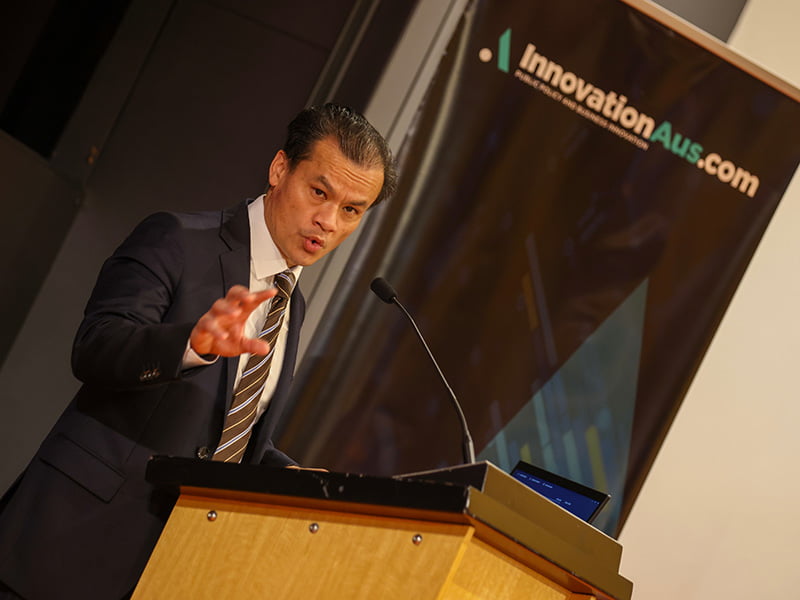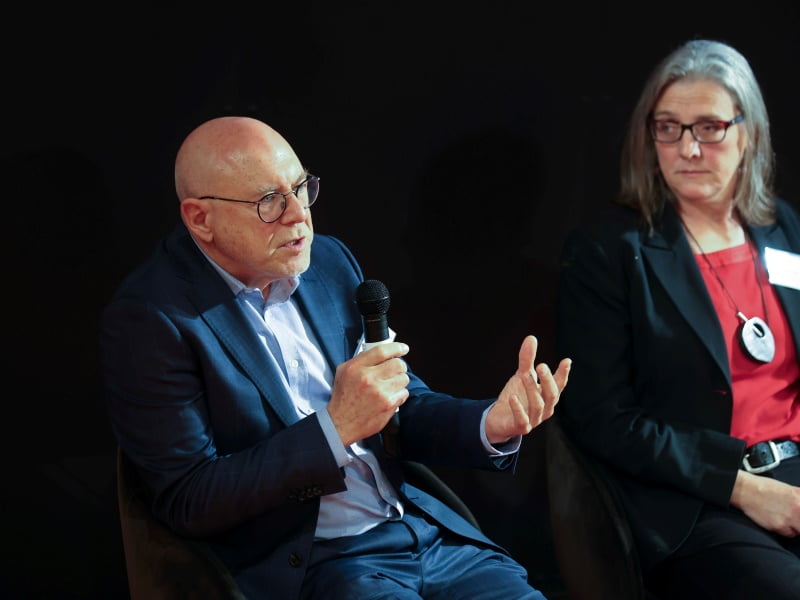Industrial policy is “back in vogue”, now offering a way to meet environmental targets while revitalising outer suburbs and the regions, according to the New South Wales Industry minister, who is finalising the state Labor government’s first plan in more than a decade.
Anoulack Chanthivong on Tuesday said his first industrial policy would look to commercialise and industrialise the already excellent innovation occurring in New South Wales, with more resilient manufacturing a key focus.
He said the state is aligned with the Albanese government’s national plan for industrialisation but called on the Commonwealth to coordinate a national approach that avoids duplication and stops a race to the bottom on subsidies.

Speaking at the InnovationAus.com Capability Papers Manufacturing and Energy Transition forum in Sydney, the Minister said industrial policy that takes advantage of the clean energy transition also offers a way to help frame environmental targets as economic drivers.
“I think the message, particularly in environmental policy, needs to be much more contemporarily relevant — to those communities and to those sectors and to those jobs — that speaks to the broader sphere of the Australian population,” he said.
It’s been missing, Mr Chantivong said, fuelling culture wars and putting a handbrake on the investments needed in the clean energy transition.
“If we focus environmental policy as an industry and as an economic policy, I think you’ll get a much greater support base from the Australian community in general.”
The south-western Sydney MP said the transition must create “good industrial jobs” and “spatial equity” in the outer suburbs and regions – areas that have borne the brunt of Australia’s shift to a “predominant service economy”.
Innovation expert and UTS Emeritus Professor Roy Green said terminology is proving to be an important part of communicating the benefits of clean energy in places like the Hunter Region.
“There’s a very interesting discussion going on in the Hunter, which is undergoing a huge energy transition, except that people don’t like the term transition,” Professor Green said.
“Because it means we’re losing something in the hope, maybe a misplaced hope, of gaining something – ‘we’re going to lose our jobs in the hope that other jobs might appear’.”
While there is no doubt coal production needs to end, using terminology like diversification rather than transition is cutting through, he said.
“The point is to create the opportunities in the future that will take advantage of the local skills and investment in new technologies and new and industries of the future that are emerging.”

Mr Chanthivong said the energy opportunity will be a key part of the industrial policy he is currently working on, ahead of the Minns government’s first budget next month.
“As an overarching framework and theme for all our industry policy measures, it will provide the principles and directions for government interactions, with a focus on increasing productivity and, of course, our national resilience,” he said.
Boosting manufacturing will also be a “key focus” of the policy, which will build on the work of the state’s first Modern Manufacturing Commissioner.
New South Wales still accounts for 30 per cent of the nation’s manufacturing and remains a national “powerhouse”, Mr Chanthivong said, but there is plenty of room for improvement.
Australia this month fell again on the annual ranking of economic complexity, having “not yet started the traditional process of structural transformation”.
Now sitting at 93rd of 133 ranked countries, alongside nations like Uganda, Pakistan and Namibia, Australia is a long way from the industrial powerhouses in Europe and East Asia.
“We can and we should do so much better,” Mr Chanthivong said, referring to the index.
“With much love and affection to Namibia, Uganda and Pakistani friends, Australia as a first rate nation with our highest level intellectual capacity and ability, we can move [up]. We need to consolidate that idea into industrialisation. And that really requires an investment mindset, and that’s going to require a risk taking mindset.”
Mr Chanthivong said the Commonwealth had a role to play in coordinating a national approach.
“Including inter-jurisdictional collaboration, the use of incentives and policy design, program guidelines and financing parameters. And the $15 billion from the NRF goes a long way as well.”
The $15 billion Fund will target seven priority areas with loans, equity investments and guarantees offered to projects its independent believes can diversify and transform Australia’s industry and economy.
Mr Chanthivong said the new state government will broadly follow its lead.
“We’ll be certainly not trying to deviate too much from that, otherwise, it would actually not get the economies of scale which I think actually need to ensure that we get that stability of demand and that pipeline coming through.
The state minister also urged his Commonwealth counterparts to lead a nationally coordinated “team Australia” effort that avoids the duplication of areas of specialisation and a race to the bottom of financial subsidies between the different states.
“I just don’t think that is the best for… taxpayers. There’s enough for all the states, and that coordination at the national level is so important to ensure that we take advantage of the comparative advantages of each particular state and utilise our industrial capacities to grow the national pie.”
Do you know more? Contact James Riley via Email.

